Guest Post by Jiu Z
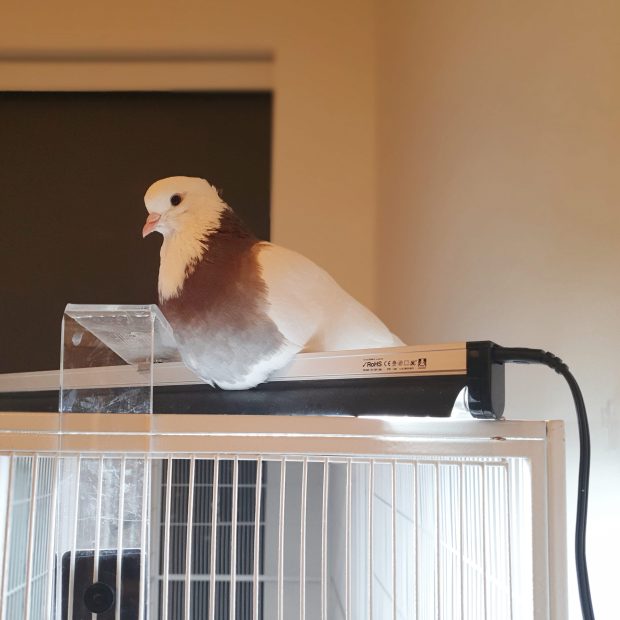
Why do your indoor birds need special lighting?
Birds need access to direct, full-spectrum UV (ultraviolet) light to be happy and healthy. Ideally, they’d get this through safe, protected outdoor time straight from the natural sun for at least 30 minutes a day, 3 times a week (more is better). However, if your birds are only getting sunlight through glass windows or through mesh screens, they aren’t getting the full spectrum light they need—UV light can’t pass through glass. For these indoor birds, you can provide full-spectrum avian lighting.
What does full-spectrum UV lighting mean?
Natural sunlight is more than just the wavelength of light that we can see (called visible light). It also includes UVA- and UVB- wavelength light, and these are what our birds need. UVA is invisible to humans, but it’s an important part of avian vision and mental wellbeing. UVB light is crucial for vitamin D production, which birds need for bone health, immune systems, energy levels, and more.
Full-spectrum UV lighting aims to replicate what your bird would get from the natural sun. It’s important to note that not all “full-spectrum” light is equal! Many lights advertised as such don’t have adequate UVB output, or are otherwise unsafe.
Benefits of Proper Lighting for Birds
People who use avian-safe UV lighting have seen huge improvements in their birds’ mood, activity, and overall health. Some benefits are easily visible to us humans: higher energy, better feather quality, healthier eggs. Others may be more subtle to the naked eye, but no less important: stronger bones, more robust immune system, and greater mental wellbeing.
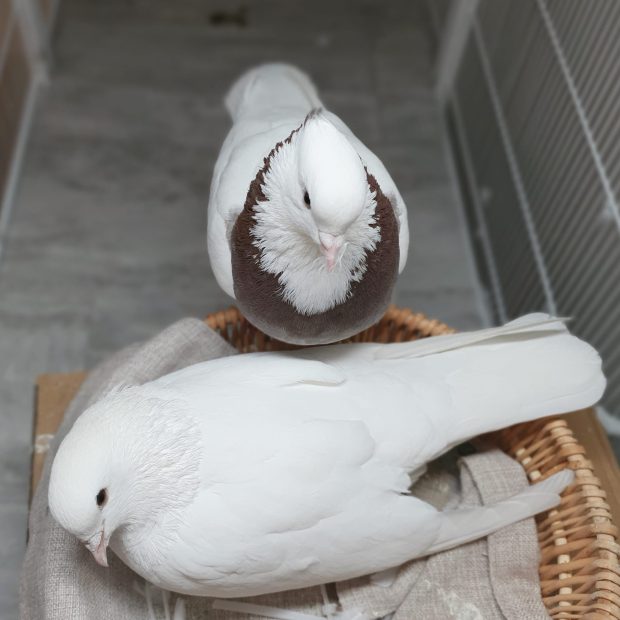
Lighting recommendations
Here are some options for avian lighting for 1-2 pigeons. Read on for information on correct usage of UV lighting and things to watch out for.
Top pick:
Cage size: 48″w x 32″h or smaller (Large and XL dog crates with shelves where the bird’s head is 6″ or less from the top of the cage)
Lamp kit with bulb: Arcadia Bird PureSun Mini
Bulb only: Puresun T5 Mini Bulb [Requires a T5 light fixture! If you don’t have one already, get the kit version]
Place 6-8″ from top of bird’s head. Replace every 9-12 months. More details about this light.
Note: If you can get at least 8″ of space from the top of the birds’ head to the top of the cage, use the Arcadia PureSun Midi recommended below.
Cage size: 64″w x 34″ h
Lamp kit with bulb: Arcadia Bird PureSun Midi
Bulb only: Arcadia Bird T5 Midi [Requires a T5 light fixture! If you don’t have one already, get the kit version]
Place 8-12″ from top of bird’s head. Replace every 9-12 months.
More details about this light.
Other cage setups and bird species:
I recommend contacting Arcadia Bird with your cage dimensions and the distance of your bird’s head from the top of the cage (at the highest perching spot) for a custom recommendation. https://www.arcadiabird.com/contact/
More information at the end about buying lamps and methodology for researching your own.
Placement
Light is strongest closest to the bulb and weaker the further away the bird is. It’s important to make sure the light is placed close enough for your bird to benefit, but not so close that it causes burns or irritation. Lighting should always be placed on top of the cage, never to the side. Putting the light on top prevents your bird from having to stare into the light and provides a gradient so that they can self-regulate when to move closer to or further from the light. Make sure that there are areas of shade in the cage (such as under shelves) so your bird isn’t forced to always be in the light.
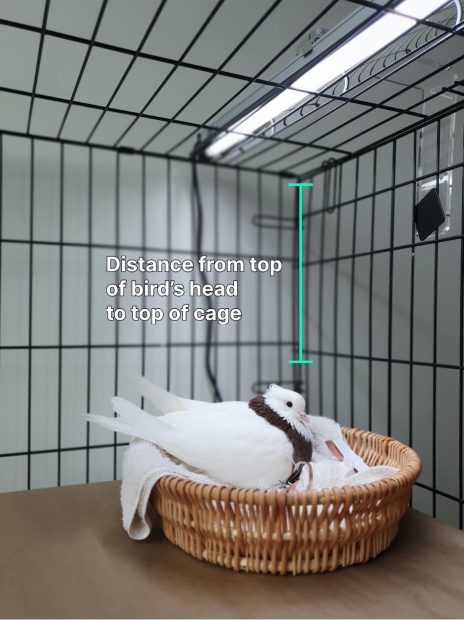
Refer to the descriptions above for recommended distances. If the lamp you want to use isn’t listed, contact the manufacturer. If you are using a reflector, increase the distance by 3″. Distance is relative to the top of the bird’s head at their highest perching location.
Note: “Distance from top of bird’s head” isn’t just the distance from the shelf, you also need to account for the bird! If you don’t have enough distance, the mounting bracket included in the lighting kit may be able to add a couple inches.
How long the light should be on
Many have had success with 12-hour cycles: On 12 hours, off 12 hours. Make sure that the time the light is off is at least 12 hours so that your bird has enough time to rest. You can use a light timer or smart plug to avoid having to remember to manually turn it on and off every day.
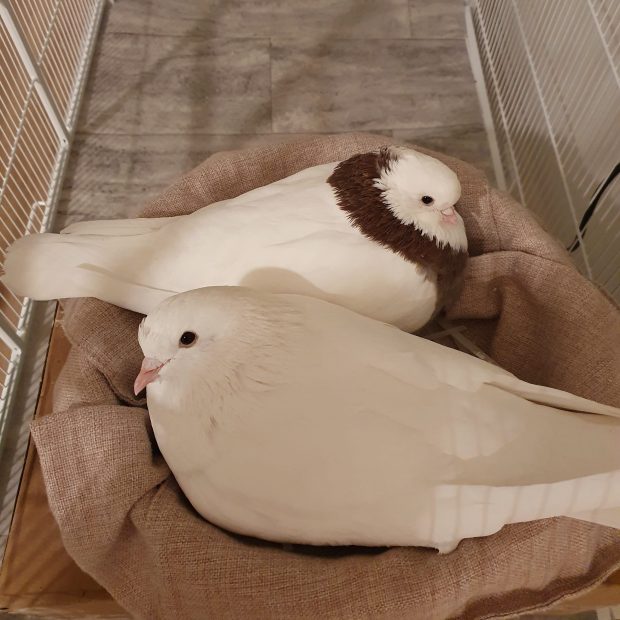
What to watch for
Although uncommon, sometimes UV lighting has caused skin and eye irritation in parrots and reptiles. Watch for squinting, face rubbing, or redness of the skin around the eyes. If you notice any of these, discontinue use of the light.
When and why to replace your UV lighting
All UV bulbs have a limited lifespan; their UV output decreases over time until it’s no longer enough to give your birds the UV dose they need. For compact fluorescent lights such as the ZooMed Avian Sun, replace the bulb at least every 6 months. For linear fluorescent lights such as the Arcadia PureSun Midi, replace the bulb at least every 12 months.
Considerations when choosing a light
If you decide to do your own research on what light to use, here are some considerations to take into account. I highly recommend downloading and reading the PDFs on UV lighting needs by Laura Wade, DVM and the Psittacine Welfare Institute.
Bulb type: Choose either linear fluorescent or compact fluorescent. Avoid mercury vapor bulbs. While CFL bulbs are a more common light fixture, they also need to be replaced more often, have a less diffuse light gradient (quicker fall-off), and you still need to finagle the fixture so that the bulb is horizontal over the cage and at the correct height. IMO, you might as well just get the Arcadia linear fluorescent kits mentioned above.
UV output: This is tricky, as it can be difficult to verify manufacturer claims. If you can afford a UVB solarmeter, you can test the light yourself. In general, look for a light that has adequate UVB output and isn’t known to have a high amount of short-wavelength UVB output (can be dangerous). Be cautious of high UVB reptile lighting that may be excessive for birds.
CRI: The color rendering index refers to how closely the light approximates the colors of natural light. It should be a minimum of 91 for birds (some sources cite 88, but higher is better.)
Here are some other options on the market you can consider. You may want to check if your avian vet has a solarmeter and whether they advise for/against a specific bulb. If you can get access to a solarmeter, this also helps with knowing when a bulb needs replacing.
Currently, I don’t recommend experimenting with unknown brands. Good avian-safe bulbs are difficult to make and research on them is already scarce; you don’t want to increase risk any further.
ZooMed Avian Sun: This bulb has weak output, which can be remedied by placing it closer (4-8″), but watch for signs of irritation (see above: “What to watch for”). Replace at least every 6 months.
According to the manufacturer, the bulb is 6800K and has a CRI of 93 and 900 lumens. The UVB is 5% of the bulb’s total energy output and UVA is 30%.
Hagen Exo-Terra UVB 100/ReptiGlo 5.0: These reptile bulbs come in compact fluorescent (CFL) and linear fluorescent. There are multiple lamps in the Exo-Terra range–if you decide to get one, be careful you are buying the right one! Some do not have UVB, while others have too much. The Exo-Terra UVB 100 bulb should be 9-15″ from the top of the bird’s head.
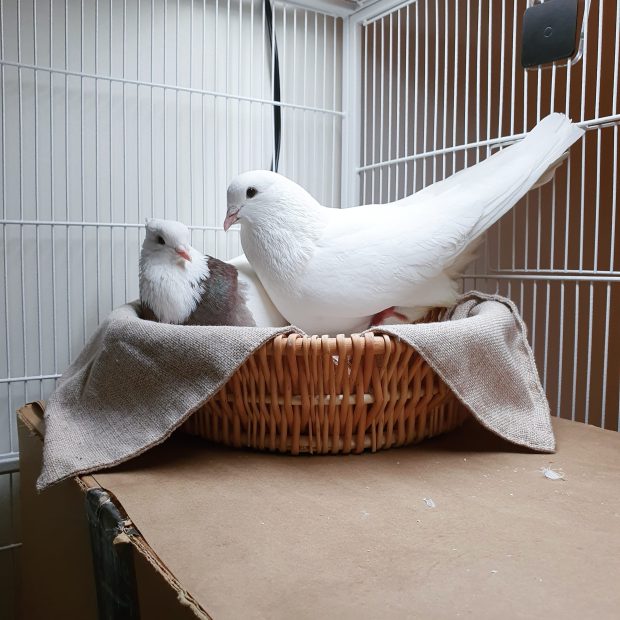
References
Association of Avian Veterinarians. (2018). ULTRAVIOLET LIGHTING FOR COMPANION BIRDS: BENEFITS & RISKS.
Original client handout © 2009 with updates © 2018 by Laura Wade (Specialized Care for Avian & Exotic Pets, Clarence NY, USA)
Bauck, L. (n.d.). Benefits of UVB Lighting for companion birds. Hari. Retrieved January 5, 2023, from https://hari.ca/avian-care/housing-environments/benefits-uvb-lighting-companion-birds/
Costanzo, G., & Armendaris, A. (n.d.). Lighting for Pet Birds. PetSmart. Retrieved January 5, 2023, from https://www.petsmart.com/learning-center/bird-care/lighting-for-pet-birds/A0364.html
Lupu, C., & Robins, S. (2013). Determination of a safe and effective ultraviolet B radiant dose in budgerigars (melopsittacus undulatus): A pilot study. Journal of Avian Medicine and Surgery, 27(4), 269–279. https://doi.org/10.1647/2011-0291
Nightengale, M., Stout, R. W., & Tully, T. N. (2022). Plasma vitamin D (25-hydroxyvitamin D) levels in Hispaniolan amazon parrots (Amazona ventralis) housed indoors over time. Avian Diseases, 66(2). https://doi.org/10.1637/aviandiseases-d-21-00117
Psittacine Welfare Institute. (2022). Parrot (Psittaciformes) Lighting & UV. Retrieved January 5, 2023.
Stanford, M. (2006). Effects of UVB radiation on calcium metabolism in Psittacine Birds. Veterinary Record, 159(8), 236–241. https://doi.org/10.1136/vr.159.8.236
Stanford, M. (2006). Provision of Ultraviolet Light for Captive Grey Parrots. Avian Examiner. Retrieved January 5, 2023, from https://avianmedicine.net/wp-content/uploads/2013/03/ae29.pdf.
Stanford, M. (n.d.). INTERNATIONAL CONFERENCE ON EXOTICS 2004.
Wissman, M. A. (n.d.). Hypocalcemia in Birds. Hypocalcemia in birds. Retrieved January 5, 2023, from https://www.exoticpetvet.net/avian/hypocalcemia.html
Woodhouse, S. J., & Rick, M. (2016). The effect of UVB radiation on serum vitamin D and ionized calcium in the African spoonbill (platalea alba). Journal of Zoo and Wildlife Medicine, 47(2), 447–456. https://doi.org/10.1638/2014-0239.1
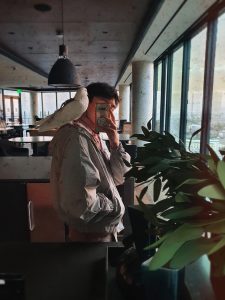
Jiu took in a lost pigeon as a student after a “dove release” on the UC Berkeley campus and has been part of Palomacy ever since. They spend their free time getting pecked by Pidge for peeping on his married life with his adorable pigeon wife, Meringue.

